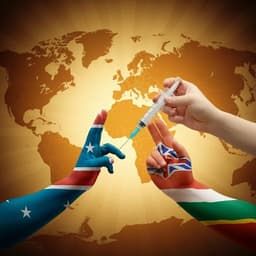
Economics
Economic losses from COVID-19 cases in the Philippines: a dynamic model of health and economic policy trade-offs
E. P. D. Lara-tuprio, M. R. J. E. Estuar, et al.
Discover how a novel mathematical model reveals the economic impacts of COVID-19 in the Philippines, weighing health policies against economic losses. This research, conducted by Elvira P. de Lara-Tuprio and colleagues, highlights crucial findings across various regions, particularly in the National Capital Region.
~3 min • Beginner • English
Related Publications
Explore these studies to deepen your understanding of the subject.







